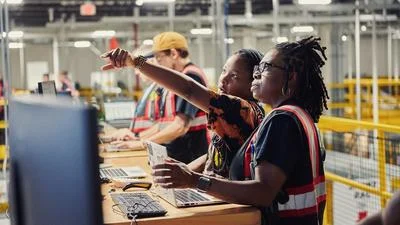On May 8-9, the United States hosted a meeting of the U.S.-China Working Group on Enhancing Climate Action in the 2020s in Washington, D.C. The group is co-led by Senior Advisor to the President for International Climate Policy John Podesta and PRC Special Envoy for Climate Change Liu Zhenmin, and includes relevant officials from both countries.
The discussions at the meeting were comprehensive, recalling the San Francisco summit between the two Presidents. They focused on areas identified in the Sunnylands Statement, including energy transition, methane and other non-CO2 greenhouse gases, circular economy and resource efficiency, deforestation, and low-carbon and sustainable provinces/states and cities. In addition to these topics, cooperation on multilateral issues related to promoting a successful COP 29 in Baku, Azerbaijan was also discussed. Both sides exchanged experiences and challenges with respect to their respective climate policies and actions, aiming to respond meaningfully to the climate crisis.
In line with the Paris Agreement’s temperature goal, both sides reaffirmed their commitment to demonstrating leadership considering different national circumstances and pathways. They welcomed COP 28’s Global Stocktake decision that called for Parties to submit on time 2035 nationally determined contributions (“NDCs”) that are economy-wide, cover all greenhouse gases, and are aligned with a 1.5C increase; they further expressed their intention to engage in related technical and policy exchange.
The U.S.'s intent to achieve 100 percent clean power by 2035 was recalled alongside China's intent to phase down coal consumption during its 15th Five Year Plan. Both countries plan to intensify technical and policy exchanges on realizing these goals.
Both sides intend to host a second “Methane and Non-CO2 Greenhouse Gases Summit” at COP 29. They committed themselves towards bilateral cooperation and capacity building on deploying abatement technologies as well as developing or improving respective MRV systems and standards. The aim is to achieve significant methane emissions control and reductions in the 2020s. Both sides noted with interest the Methane Alert and Response System of the UNEP International Methane Emissions Observatory. They also plan to engage in technical cooperation and capacity-building for measurement and abatement solutions of other non-CO2 greenhouse gases, including industrial N2O as well as tropospheric ozone precursors.
Recognizing the importance of developing a circular economy and resource efficiency in addressing the climate crisis, both sides expect to conduct further technical exchanges on this topic, including food loss and waste reduction, textiles, and recycling standards.
Finally, both sides expressed anticipation for the U.S.-China High-Level Event on Subnational Climate Action, scheduled to be held May 29-30, in Berkeley, CA.





